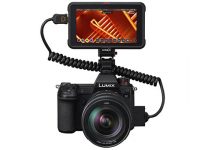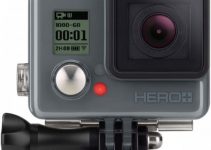Sometimes, flying a drone indoors could produce even better results than filming with it while hovering in the air, especially when this technique serves your story and enhances its visual aesthetics. Unfortunately, the limitations and risks that typically a closed area poses could be a serious challenge even for the most experienced fliers. Nevertheless, if you still want to give flying indoors a try, Tom David Frey of Tom’s Tech Time shares a plenty of handful tricks and techniques that will help you not only keep your drone safe all the time but also capture some stunning, buttery-smooth footage along the way.
Of course, you can always get some ground shots, without wasting money on any additional gear and without risking the drone itself, by simply holding the quadcopter in your hands and using the built-in 3-axis image stabilization instead. Yet, on every other occasion when flying indoors, the suggested recommendations below should be an excellent place to start.
Long story short, here are the ten tips and tricks Tom provides in his video:
- Don’t fly indoors if you don’t have to. Use other more suitable tools such as gimbals instead.
- Never use carbon fiber (reinforced) propellers as these can cause more serious injuries than plastic ones.
- Always use your DJI Prop Guards. This will save your drone when bumping into objects and scratching surrounding surfaces such as walls, ceilings, etc.
- Set the “remote controller signal lost” to “Hover”. Otherwise, your drone might crash into the ceiling.
- Use only a steady GPS connection (10+ satellites recommended)
- Use A-Mode on your DJI Phantom 4 drone if your copter can’t connect to at least 10 satellites
- Keep in mind that the LiveView shows a wide angle, not a true front view
- Always keep some space between the drone and the ceiling. If your drone doesn’t have enough air to displace above, below and to each side, it will become unstable.
- Use Course Lock Mode for indoor orientation when rotating in flight
- Stay away from people, fly at low speeds and with some extra caution
Last but not least, use this technique purposefully, not just because you’re curious about it or just because you can. Let’s not forget that drones are meant to be flown outdoors predominantly, so you should have a really serious reason behind your intention to fly a quadcopter indoors. Needless to say, taking some sufficient precautions in advance on those occasions is absolutely a must.
At the end of the day, the safety should be one of your primary concerns as unforeseen accidents happens all the time, especially when flying a drone. Apparently, things could mess up quite easily if you are not careful enough. All in all, even the smallest consumer drones can cause serious injury if used recklessly, so use your common sense to avoid complications and always fly safe!
[source: Tom’s Tech Time]
Disclaimer: As an Amazon Associate partner and participant in B&H and Adorama Affiliate programmes, we earn a small comission from each purchase made through the affiliate links listed above at no additional cost to you.
Claim your copy of DAVINCI RESOLVE - SIMPLIFIED COURSE with 50% off! Get Instant Access!





